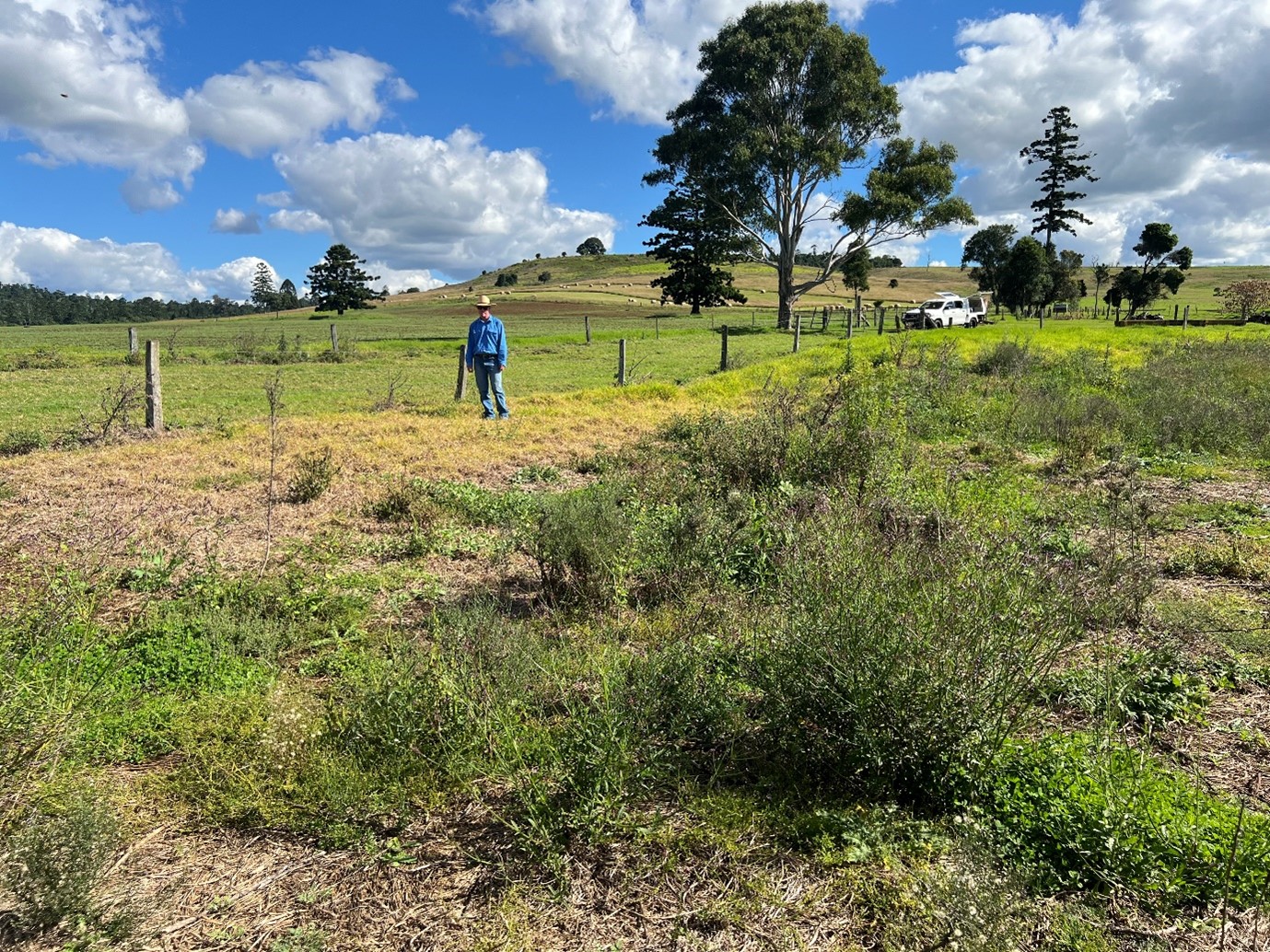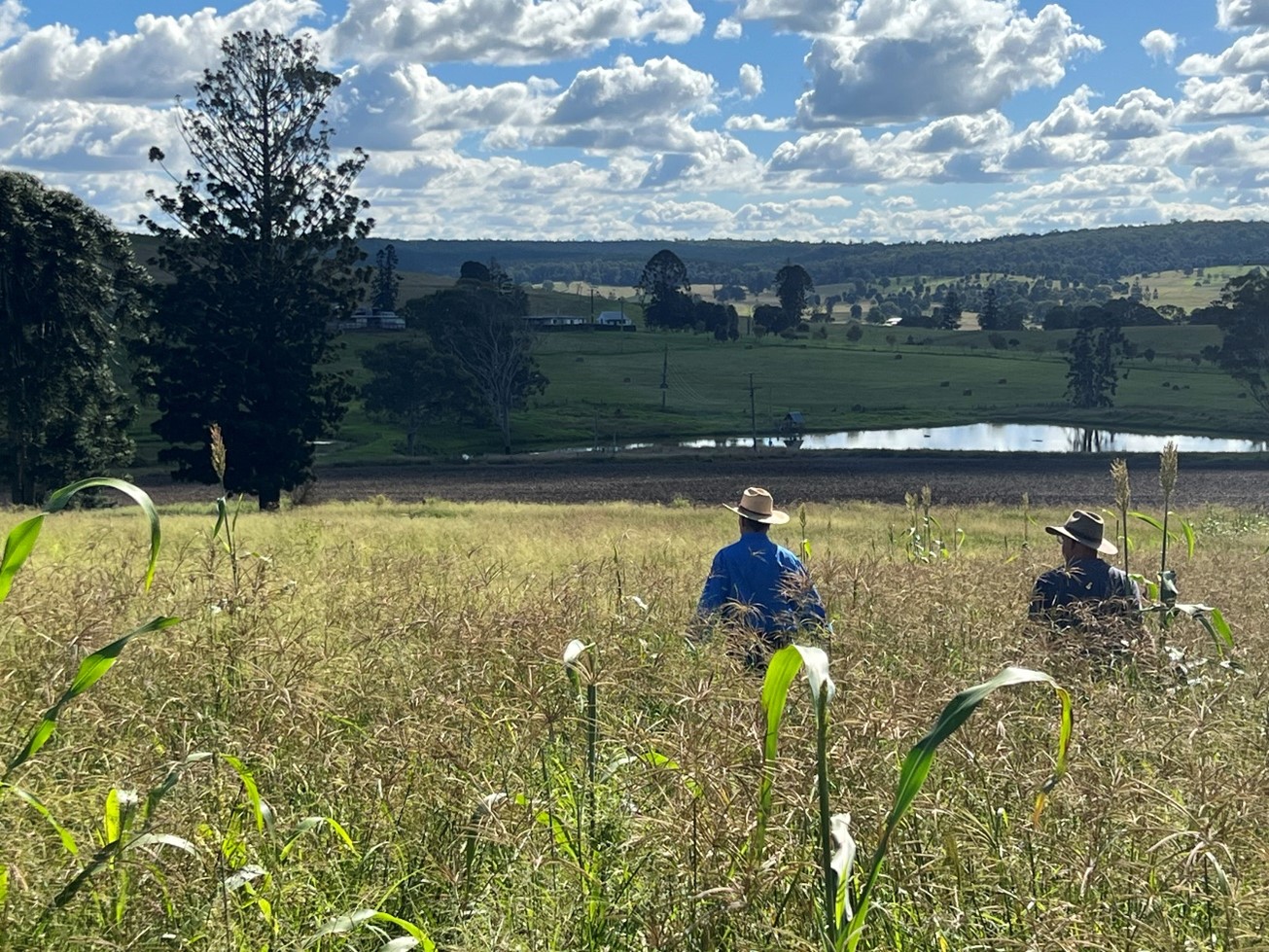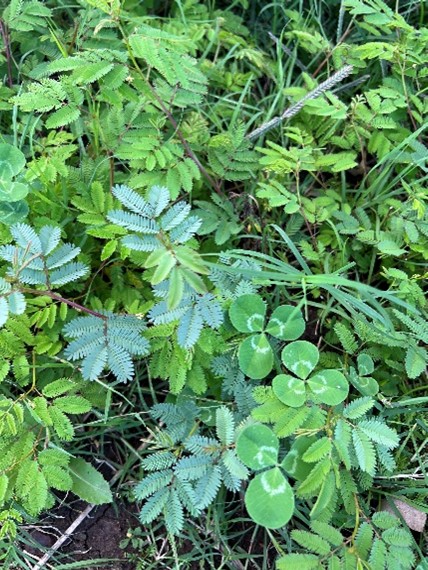Beyond Kikuyu grass: What’s next and the opportunities
Pasture dieback has left a big mark on many properties in our south-eastern region, especially for producers who rely heavily on grazing kikuyu grass. For decades, Kikuyu has been a productive and reliable grass and has done a great job of holding the soil together in drainage lines and on slopes, but its high susceptibility to pasture dieback and its inability to recover has resulted in large areas of grass death and invasion by weeds in recent seasons. Unfortunately, the most common Kikuyu varieties do not set a high volume of viable seed in our climate resulting in long term pasture collapse.
This has left producers facing a difficult but important question: what’s next?

Exploring tropical grasses
One option is to look at more pasture dieback tolerant grass species such as Rhodes grasses, Gatton Panic, Signal or Setaria. For many, this feels like unfamiliar territory. These grasses grow taller, often look “untidy,” and behave differently to the familiar Kikuyu. That can feel overwhelming, but with the right management and nutrition, they can deliver a high volume of feed of comparable quality.
One key difference is how they need to be grazed. Kikuyu bounces back quickly and tolerates frequent, hard grazing. Tropical perennial grasses need longer rest to recover, and if left too long, they can quickly lose quality and become less palatable. The sweet spot is about timing: graze them when there is still plenty of green leaf and keep them in this growth phase for as long as possible. This change means shifting from a “graze hard and often” approach to a more strategic grazing management plan.
Adapting your management to a different grass
Switching out of Kikuyu is a big step, and it can feel risky. But dieback doesn’t have to mean the end of productivity. By choosing more tolerant varieties and being willing to adjust management practices, producers can create pastures that are not only more resilient, but also highly productive into the future.
Bradley Frohloff, an Upper Yarraman producer who lost his kikuyu to pasture dieback, remembers the challenge clearly:
“It was stressful and there were sleepless nights, but we came out the other side and we actually had more feed than cattle.”
Keep an eye out for Bradley’s upcoming case study you’ll be able to read his full story and of how he rebuilt his pastures with more dieback tolerant tropical grasses. It’s a great example of what’s possible when you commit to making the switch.

A new challenge is learning how to manage grasses differently to remain productive and persist for up to 30 years:
- Tropical species generally need careful utilisation, and more reliance on timing and feed budgeting.
- For higher production levels, periodic fertilising will most likely be required.
Another adjustment is recognising that these taller grasses respond to your broader grazing approach.
- Low-input operations with lower utilisation rates during the growing season, may result in the pastures growing tall and rank. However, with thoughtful timing of calving and some winter supplementation, production can still be reasonable.
- High-input operations who invest in fertiliser and intensive grazing management will unlock much higher feed volumes and quality. Mechanical intervention (e.g. slashing) may be needed at times to enhance leaf area, but the productivity gains can be significant.
The legume opportunity
A tropical grass-based pasture also opens the door to successfully introducing a range of pasture legumes. Without the dense, competitive mat of Kikuyu, other species can be successfully established amongst the grasses, further boosting productivity. Legumes such as Desmanthus and stylo can lift animal performance through higher feed quality, support higher stocking rates with more available feed, and improve soil fertility by fixing nitrogen. In most Kikuyu growing regions, options also include temperate legumes like medics and clovers, or shorter-term options such as lucerne, vetch, and winter forage legumes.

Tropical grasses do require a shift in grazing approach, but with good timing and management they can deliver resilient, productive pastures that support long-term profitability.
Learn more
Don’t miss your chance to join us at one of our upcoming Pasture Recovery Workshops across south east Queensland. This is a great opportunity to learn, share experiences, and get practical advice. Perfect for anyone dealing with pasture dieback and looking for a way forward or considering a switch into tropical grasses and legumes
Workshop Dates:
- Killarney – 8 October
- Boonah – 9 October
- Toogoolawah – 10 October
- Yarraman – 11 October
Visit the FutureBeef events page to find full event details and how to register for the events.
This work is conducted under the Queensland Pasture Resilience Program, a partnership between the Department of Primary Industries, Meat & Livestock Australia and the Australian Government through the MLA Donor Company.